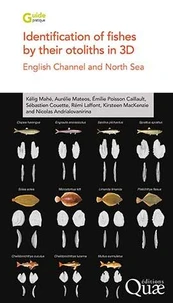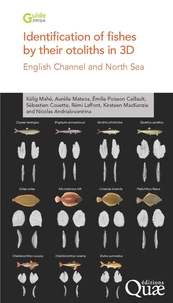The otolith, a calcified structure in the inner ear of fish, evolves throughout the life of an individual and is generally used to estimate the age of the fish. So how do we analyse this tiny mineral particle, and what does it tell us about each species of fish?
This book provides a description and three-dimensional (3D) analysis of the otolith shapes of the main commercial fish species in the English Channel and North Sea.
This innovative approach, facilitated by the use of an X-ray microtomograph, makes it possible to specify otolith characteristics, differentiate fish populations and to locate them geographically.
Flatfish such as sole, dab, plaice and turbot, and roundfish from herring to haddock and gurnard: for each species, five individuals representative of the size range sampled in the marine environment were selected and their otolith shape described.
This guide is an invaluable resource for fisheries science, offering researchers, professionals and technicians a new way of refining their knowledge of Channel and North Sea Species and individuals.
The otolith, a calcified structure in the inner ear of fish, evolves throughout the life of an individual and is generally used to estimate the age of the fish. So how do we analyse this tiny mineral particle, and what does it tell us about each species of fish?
This book provides a description and three-dimensional (3D) analysis of the otolith shapes of the main commercial fish species in the English Channel and North Sea.
This innovative approach, facilitated by the use of an X-ray microtomograph, makes it possible to specify otolith characteristics, differentiate fish populations and to locate them geographically.
Flatfish such as sole, dab, plaice and turbot, and roundfish from herring to haddock and gurnard: for each species, five individuals representative of the size range sampled in the marine environment were selected and their otolith shape described.
This guide is an invaluable resource for fisheries science, offering researchers, professionals and technicians a new way of refining their knowledge of Channel and North Sea Species and individuals.



